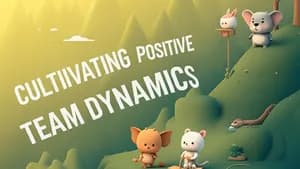Learning is a journey, not a destination, and often, the most profound learning happens when we're not just exploring individually, but as part of a team. Whether it’s a school project, a sports team, a club activity, or even family discussions around the dinner table, the way we interact and learn together profoundly impacts our success and our relationships. Over my many years working with young people and their families, I’ve seen time and again that one of the most powerful catalysts for positive team dynamics and deeper learning isn't just intelligence or effort, but something far more fundamental: curiosity. When team members are genuinely curious, they naturally ask questions, delve into new ideas, and strive to understand diverse perspectives. This isn't just about accumulating facts; it’s about a shared, open-minded approach that supercharges problem-solving, fosters incredible adaptability, and ultimately creates a more positive, resilient, and effective team environment. Let's explore how you can cultivate this essential trait, both for yourself and within your teams, whether in academic pursuits or any collaborative endeavor.
The Foundation of Curiosity: Asking "Why?" and "What If?"
At its heart, curiosity in a team setting begins with a willingness to challenge assumptions and look beyond the surface. It’s about more than just knowing the right answer; it’s about understanding why that answer is correct, or what if there’s an even better way to approach a problem. Think about a group project where everyone is assigned a task. A team lacking curiosity might simply complete their individual parts and stick them together, hoping for the best. But a curious team will pause. They’ll ask, “Why are we doing it this way? Is there a reason we chose this particular approach?” or “What if we tried a completely different angle? Could that lead to a more innovative solution?”
This kind of questioning isn’t about being critical for criticism’s sake; it’s about constructive exploration. For students, this means actively engaging with the material in study groups. Instead of just memorizing, ask your teammates, “Why does this formula work?” or “What are the underlying principles here?” Parents, you can model this at home by encouraging similar discussions about everyday problems or even current events. Instead of just stating facts, ask your children, “Why do you think that happened?” or “What do you think would happen if…?”
I recall a particularly challenging engineering design project a group of high school students undertook. They were stuck, frustrated that their initial design wasn't working. After days of tinkering with minor adjustments, one student, typically quiet, finally blurted out,

